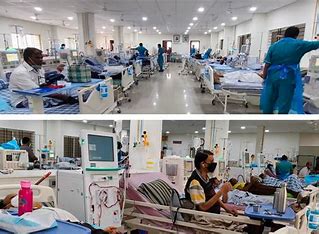
As the India-Australia Economic Cooperation and Trade Agreement (ndAusECTA) comes into effect from Thursday, December 29, the culmination of an unprecedentedly fast pace of negotiations amid the pandemic and global economic turbulence has whipped up massive expectations of an increase in investment opportunities and expanded export footprint as preferential market access provided by Australia now opens up for Indian goods with zero customs duty on 100 per cent of its tariff lines. Overall the agreement has the potential to double bilateral trade in goods and services to USD 45 billion in five years and is a run-up to a Comprehensive Economic Cooperation Agreement (CECA) which may be concluded by September 2023 supported by the growing strategic partnership through membership of the four nation QUAD, the Trilateral Supply Chain Initiative and the Indo-Pacific Economic Forum (IPEF) and India’s leadership of the G20.
Importantly, the ECTA, according to Commerce and Industry Minister Piyush Goyal, offers a lot of potential for exporting finished goods to Australia which has hardly any manufacturing being largely a raw material and intermediate producing country. It’s a win-win for both FTA partners, as India gets cheaper raw materials which will not only make the country more competitive globally but also enable it to provide more quality goods at more affordable prices and serve Indian consumers better. “Australia, which is largely dependent on imports, will benefit hugely as they will soon start seeing a lot more finished goods coming in from India, providing huge amount of work and job opportunities in both goods and services provided by Indian talent,” Goyal said.
In a calibrated process, Australia will provide zero-duty access to 98.3 per cent tariff lines from day one and the remaining 1.7 per cent in a phased manner in 5 years which is expected to lead to USD 10 billion jump in India’s merchandise exports by 2026-27, as per industry sources. This will especially benefit all the labour-intensive sectors of export interest to India, such as gems and jewellery, textiles, leather, footwear, furniture, food, and agricultural products, engineering products, medical devices and automobiles. President of the Federation of Indian Export Organisations A Sakthivel estimates India’s goods exports to Australia will reach US$ 15 billion by 2025 from US$ 6.9 billion in 2021 taking full advantage of ECTA, while services should move to US$ 10 billion by 2025 from US$ 3.9 billion (provisional).
A lot of this potential can be tapped as sectorally, the agreement has broken stereotypes. Agricultural products and dairy sector – which were very sensitive for India and without which Australia has never done an agreement before – have been protected. The engineering sector exports are also expected to pick up, says Suranjan Gupta, Executive Director of Engineering Export Promotion Council, from approximately USD 1.5 billion to USD 7-10 billion over the next five years. “For certain product exports to Australia, like transmission line towers, our main competitors are China and to some extent Turkey. Here some of the companies will gain substantially as they have been exporting actively to Australia but get sidelined by China. Now with such tariff preferential, they will become extremely competitive over the next five years as the full exemption happens in all the products. We see engineering exports doubling and taking at least 5 per cent share in the total trade expansion of around 45 per cent due to the ECTA,” Gupta told The Daily Guardian.
The benefits for the apparel sector are significant. According to Government data, India’s 70 per cent of textile products and 90 per cent of apparel products face a 5 per cent tariff on export to Australia vis-à-vis competitors such as China, Vietnam and Bangladesh which have zero duty access. With the elimination of duty, India’s exports of textiles and apparels are expected to gain from US$ 0.5 billion to US$ 1.1 billion in the next 3 years. That apart, about 96 per cent of Australia’s exports to India comprised of raw materials and intermediate products, says Sanjay Budhia, Chairman of CII National committee on EXIM. “Thus the tariff concessions offered by India will allow local/domestic industries to get cheaper raw materials and enhance their competitiveness. India’s labour-intensive sectors are currently subject to import duty of 4-5 per cent by Australia,” says Budhia.
As part of an institutional mechanism in place to encourage and improve trade on both sides, India will be offering preferential access to Australia on over 70 per cent of its tariff lines spread over 40.3 per cent tariff lines from day one and the remaining 30 per cent in a phased manner. India has offered zero duty access on coal, alumina calcined, manganese ore, copper concentrates, bauxite, sheep meat, rock lobster, macadamia nuts, cherries, and wool. Moreover, both sides have also agreed to a separate annex on pharmaceutical products under this agreement, which will enable fast-track approval for patented, generic and biosimilar medicines. Similarly, on services, India has offered market access to Australia in around 103 sub-sectors and MFN status in 31 sub-sectors from the 11 broad service sectors such as ‘business services’, ‘communication services’, ‘construction and related engineering services’, and so on.
However, India is set to gain majorly through concessions in trade in services with wide-ranging commitments from Australia in around 135 sub-sectors and Most Favoured Nation (MFN) status in 120 sub-sectors covering key areas of interest to India. The deal eliminates double taxation on IT services which was making India less competitive and less profitable in the IT sector and CII expects that the deal would provide large Indian IT companies to increase their involvement in Australian government projects. “The DTAA may come into force on 1 April, 2023 and this expected to eventually lead up to USD 1 billion in savings for Indian IT companies operating in Australia. Therefore, Indian IT companies may be able to generate roughly USD 4-8-billion business income from Australia each year,” says Budhia. Substantial gains are expected in pharmaceuticals whereby drugs approved in other developed jurisdiction will get approval in Australia much faster.
Post study work visas ranging from 18 months to 4 years will benefit over 1 lakh Indian students. The commitment to pursue Mutual Recognition Agreement in next 12 months will greatly benefit the professionals on both sides.















